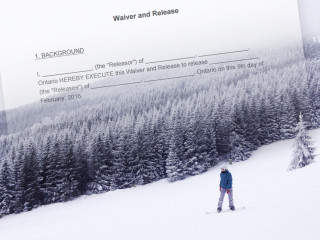Guest Contribution Written By: Galit Liffshiz MA OT Reg.(Ont) and Geisty Shu OT
Created in 1975, the Glasgow Outcome Scale (GOS) was intended to be a short and quick assessment that could be done face to face or over the phone, 6 months post-accident by any healthcare professional[1].
In 1981, the GOS was extended from 5 to 8 functional levels and is called GOS-E[2]. It is a functional outcome measure that evaluates the impact of traumatic brain injury (TBI) on clients’ ability from vegetative state to good recovery.
As of June 1, 2016, the GOS-E has been used in Ontario, to evaluate whether a client meets the criteria for catastrophic impairment. Originally a simple questionnaire for hospital use, the GOS-E has been adapted as the main tool for determination of catastrophic impairment following TBI in Ontario[3].
The determination is being done by an OT Situational Assessment and a physician/ neuropsychologist assessment.
In a recent court decision, Abdi v. TD Insurance Company[4], there was a dispute about the effect of head injury versus the effects of other injuries on the client’s function. In that case, the OT administered the GOS-E questionnaire and answered question #9 which asks, “What is the most important factor in outcome?” The answers offered are related to causation. This question necessitates a physician to make a judgment on causation.
As the OT answered question #9 in this case, the adjudicator opined that the GOS-E assessment does not comply with the Schedule.
The Schedule states that the physician may be assisted by other regulated health professionals as they reasonably require.
OTs are particularly skilled in conducting functional assessments to analyze clients’ abilities to complete everyday activities and are the most suitable healthcare professional to assist the physician.
Questions 2, 3, 4, and 5 on the GOS-E questionnaire are concerned with the client’s ability to manage activities of daily living. These questions address the clients’ abilities to look after themselves for long hours, perform self-care tasks, deal with callers, handle a minor domestic crisis, prepare a meal, shop without assistance, use public transport or taxi, and perform work-related activities.
OT training and experience in these domains is a valuable asset as the OT’s observation in a Situational Assessment provides real evidence of the client’s functional abilities to answer the GOS-E questions.
In addition, OTs collect data, such as range of motion, strength, gait and balance and describe the quality of the client’s performance through Situational Assessments. This is valuable in the administration of the GOS-E as it allows the physician to generate a well-rounded picture of the client in order to make an accurate judgment on the cause of impairment and on functional abilities.
A compelling OT report provides the most detailed data collection and will be best used as evidence to justify their findings. Communication of findings between the OT and physician is key to ensure consistency and accuracy of the final results on the GOS-E.
Recommended Readings
Wilson L, Boase K, Nelson LD, Temkin NR, Giacino JT, Markowitz AJ, Maas A, Menon DK, Teasdale G, Manley GT. A Manual for the Glasgow Outcome Scale-Extended Interview. J Neurotrauma. 2021 Sep 1;38(17):2435-2446. doi: 10.1089/neu.2020.7527. Epub 2021 Apr 6. PMID: 33740873; PMCID: PMC8390784.
Wilson JT, Pettigrew LE, Teasdale GM. Structured interviews for the Glasgow Outcome Scale and the extended Glasgow Outcome Scale: guidelines for their use. J Neurotrauma. 1998 Aug;15(8):573-85. doi: 10.1089/neu.1998.15.573. PMID: 9726257.
[1] McMillan T, Wilson L, Ponsford J, Levin H, Teasdale G, Bond M. The Glasgow Outcome Scale – 40 years of application and refinement. Nat Rev Neurol. 2016 Aug;12(8):477-85. doi: 10.1038/nrneurol.2016.89. Epub 2016 Jul 15. PMID: 27418377.
[2] Jennett, B., Snoek, J., Bond, M. R., & Brooks, N. (1981). Disability after severe head injury: observations on the use of the Glasgow Outcome Scale. Journal of Neurology, Neurosurgery & Psychiatry, 44(4), 285-293. doi:10.1136/jnnp.44.4.285
[3] O. Reg. 34/10: STATUTORY ACCIDENT BENEFITS SCHEDULE – EFFECTIVE SEPTEMBER 1, 2010. Ontario.ca. (2018, November 19). Retrieved September 1, 2022, from https://www.ontario.ca/laws/regulation/100034#BK64
[4] Abdi v TD General Insurance Company, 2021 CanLII 127474 (ON LAT). CanLII. (2021, December 6). Retrieved September 2, 2022, from https://www.canlii.org/en/on/onlat/doc/2021/2021canlii127474/2021canlii127474.html?autocompleteStr=Abdi%20v.%20TD&autocompletePos=1













